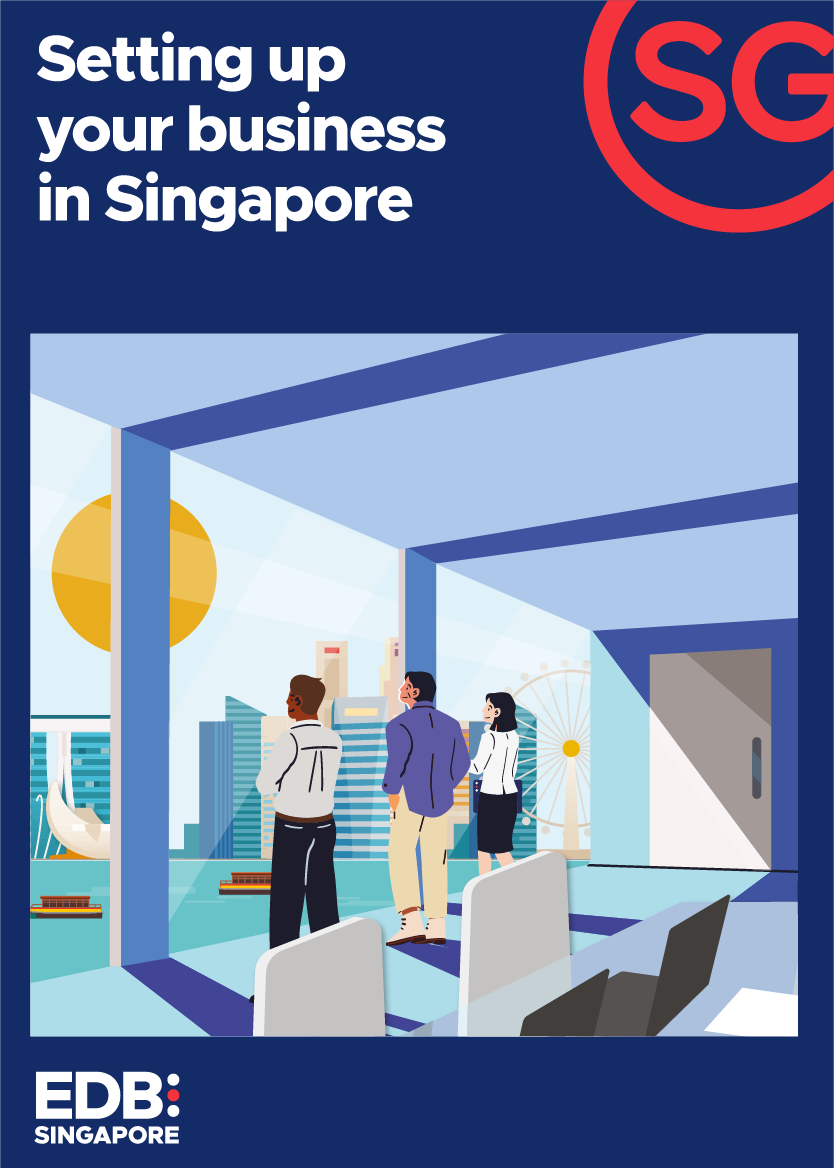Find out how you can set up your business in Singapore
Download the Guide to Setting Up Your Business in Singapore to learn more

The Asian Opportunity
There is currently no greater software market potential than in Asia. Two-thirds of the world’s population is now in Asia. According to Asia Market Entry, when fully operational within the next two decades, the Asia Pacific region is on track to account for 20-30% of global revenue for technology companies.
Asia Pacific’s large and complex geography means that things are rarely homogenous. Building partnerships and productive sales operations require commitment and a willingness to pursue multiple paths. Expanding from one customer to a regional presence requires adaptation and commitment to each country.
How to expand into Asia
Often businesses only consider one way to enter a new market – opening a physical office with on-the-ground staff; a method often favoured by large multinationals. However, small to medium sized businesses may benefit from alternative international expansion methods. James Kwa, Senior Business Development Advisor from Asia Market Entry shares the risks (the exposure to factors that ultimately hinders a company’s ability to successfully expand overseas) and costs of the three following methods, summarised below. Click on each option to read more.
Fly In – Fly Out is a useful method for accomplishing early tasks such as establishing product-market fit. The method entails high travel cost and uncertain results as a company may not be able to acquire certain customers without a physical presence in the market.
Relocation and Incorporation is a popular method that should be undertaken only after extensive research has been performed on both set-up costs and long-term factors that would affect a company’s ease of doing business in a certain location.
Proving the Market by Partnering is a low risk method that can help a company build their customer pipeline quickly and effectively through partnering an expansion specialist team that has established channels and is well-versed in the market’s nuances.

James Kwa, Senior Business Development Advisor from Asia Market Entry
Fly In – Fly Out
Risk Level: Medium
Cost Level: High Travel Costs/ Low Recruitment and Set Up Costs
Tasks to accomplish in the early stages of international expansion, such as scoping a market and building a pipeline, can be accomplished from your home geography with regular trips to Asia.
The trips may be taxing in terms of physical endurance and financial cost. Additionally, in Asia, customers may perceive that a company without a full physical presence might not be fully committed to setting up operations for the long term in the new geography. Often in government-based Request for Proposal (RFP) processes in countries such as Singapore, a company is required to be incorporated in that country to bid for projects.
This method is also a great way to understand whether your product or service has a good product-market fit. One of Asia Market Entry’s clients, a New Zealand-based executive from a Workplace Safety & Health (WSH) company, flew into Singapore and saw that there was much interest from businesses and government in their product but their product required adaptation for it to fit into the regulatory and compliance environment in Asia. While in Singapore, they met relevant WSH experts from the transport, health, education and construction sectors with the help of Asia Market Entry and representatives of the Singapore Institution of Safety Officers (SISO). Upon flying back to New Zealand, they were able to make the necessary changes to their product, launched a Singapore-specific customer-facing platform and won the World of Safety & Health Asia (New & Innovative Solutions) Award 2020 award in the succeeding months.
Relocation and Incorporation
Risk Level: Medium
Cost Level: High
Relocation and incorporation is one of the most popular methods for expanding into a new country. Incorporating in a new geography can be relatively easy in some Asian countries – especially Singapore, but more difficult in others, such as Vietnam. With legal costs, regulations and tax implications to consider, the location for an Asian headquarter requires some research. Once set up, a legal presence can make business transactions much easier. The table below gives a comparison in terms of procedural time and expense needed when incorporating in some of Southeast Asia and Oceania’s main business cities.
| Indonesia (Jakarta) |
Australia (Sydney) |
Singapore | Vietnam (Ho Chi Minh City) |
|
|---|---|---|---|---|
| Short-term costs to consider during incorporation | ||||
| Time from start to finish to complete incorporation | 13 days | 2 days | 1.5 days | 16 days |
| Administrative cost of incorporation (per month) | 205 USD | 345 USD | 230 USD | 130 USD |
| Long term considerations of choosing a location | ||||
| Quality of Technology Infrastructure by Country Digital Readiness Index 2019 | Ranked 74/141 | Ranked 17/141 | Ranked 4/141 | Ranked 93/141 |
| Rent of office space (sq ft/yr) | 60 USD | 95 USD | 117 USD | 78 USD |
| Corporate tax rate | 25% | 30% | 17% | 20% |
| Expat packages/rent of housing (per month) | 1,840 USD | 2,505 USD | 4,736 USD | 988 USD |
| Corruption Perceptions Index Rank by Country (2019) | Ranked 85/180 | Ranked 12/180 | Ranked 4/180 | Ranked 96/180 |
All data in this table, unless otherwise cited, are provided by Asia Market Entry
It is also important to consider other long-term factors that affect the ease of doing business after incorporating. This includes quality of tech infrastructure, office rentals, living expenses, corporate taxes and the perception on corruption. Many businesses choose to incorporate in Singapore due to its robust tech ecosystem, central location within Asia, competitive tax rate and low levels of government corruption.

Download the Guide to Setting Up Your Business in Singapore to learn more
When assessing the most suitable location for incorporation, it is essential to also factor in additional time and costs that may prolong or hinder the process based on the nature of your business. Certain businesses may need additional approval or licenses from the state and ministry level. For example, Fintech companies in Indonesia need an additional Otoritas Jasa Keuangan (OJK) license and Payment Service Providers in Singapore require a license as well.
Relocation of an employee is often both a professional experience and personal journey. Companies need to account for the cost and availability of various factors such as education for children, suitable housing, transport options, health insurance and medical facilities. Besides the more obvious cost and considerations, there are also “hidden” costs and risks such as the
Proving the Market by Partnering
Risk Level: Low
Cost: Medium
If you need to test the market or build a business case that Asia is the right expansion option for your business, partnering with an in-market company, like Asia Market Entry, will enable you to build a pipeline of commercial sales through outsourced business development, before you commit to incorporation.
Let’s use a real-life client example to illustrate. US-headquartered enterprise software company, Kollective, saw immense opportunity in Asia but it would have been too risky for the company to incorporate an office in Asia right off the bat given their limited resources at that time. Hence, Kollective decided to partner Asia Market Entry on a 12-month go-to-market programme which included channel development and direct sales. Together, they went on to close deals, successfully cover Kollective’s expansion costs within year one and grew from zero direct presence to over US$1 million in revenue within the first two years. Today, Kollective has three offices in Asia located in Singapore, Japan and India.
Proving the market through an outside company offers:
A company may choose a combination of these three methods during the expansion journey based on the company’s business model, risk appetite and resources. If you are ready to grow your business to Asia, you may be interested to find out why tech companies are choosing Singapore for their Asia or Southeast Asia headquarters. Read more here.